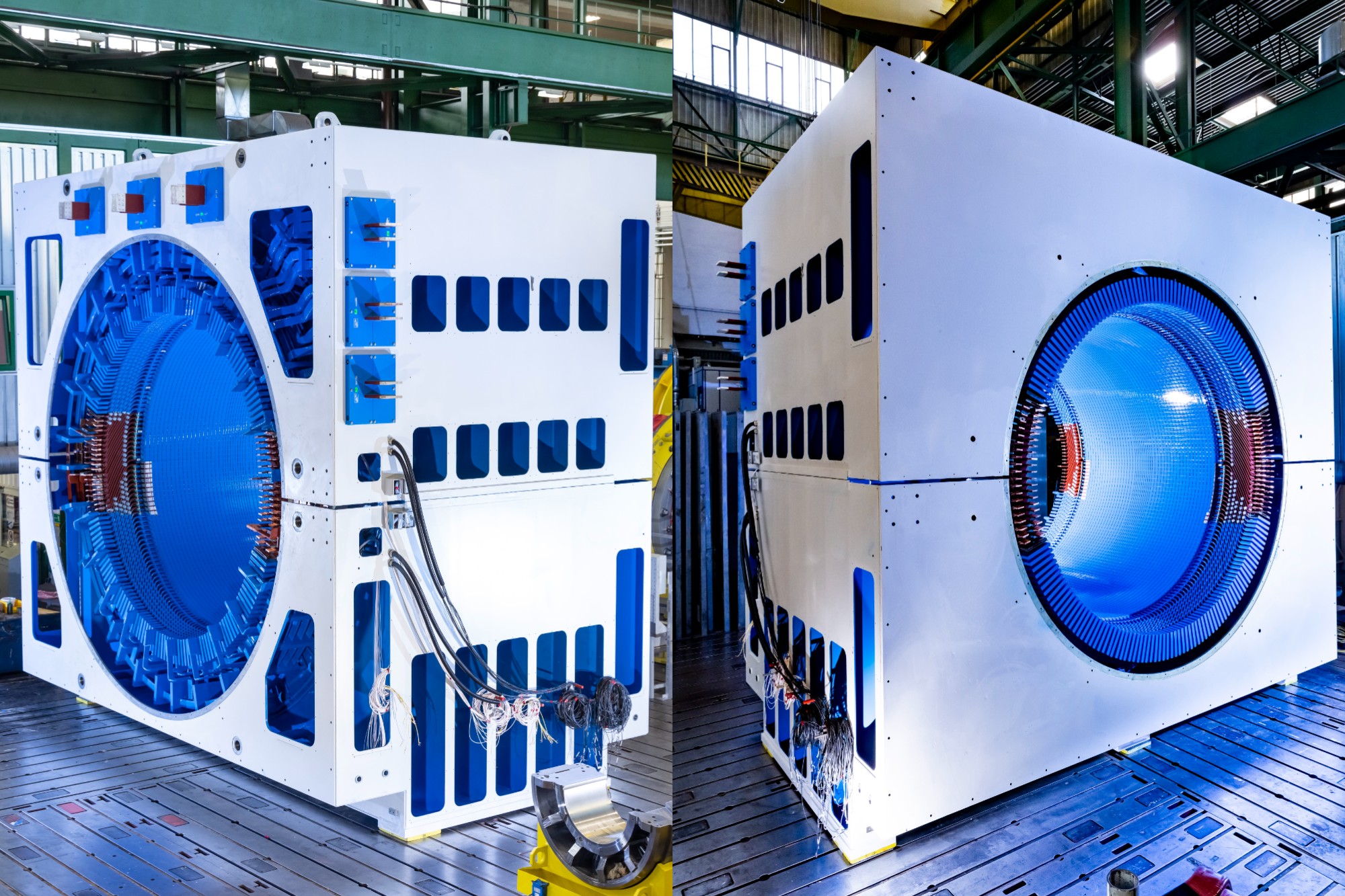Grid stability through inertia management
By EPR Magazine Editorial April 2, 2025 5:29 pm IST
By EPR Magazine Editorial April 2, 2025 5:29 pm IST

Through its state-of-the-art manufacturing facilities in India, ANDRITZ is now fully geared up to manufacture and supply its cylindrical rotor design solutions and tailor-made salient pole Synchronous Condenser units.
Managing grid stability is paramount in the evolving landscape of electricity generation and distribution. Traditional power systems face new challenges as the world shifts towards renewable energy sources. Managing grid inertia is crucial in maintaining grid stability, ensuring the power system can withstand disturbances and maintain a consistent frequency. Synchronous condensers play a vital role in this regard.
Synchronous condenser
A synchronous condenser, also known as a synchronous compensator or synchronous capacitor, is a device that provides reactive power and stabilises voltage in the electrical grid. It resembles a synchronous motor but operates without a mechanical load. When connected to the grid, synchronous condensers can either absorb or generate reactive power, helping to regulate the voltage.
Synchronous condensers are typically large rotating machines electrically connected to the power grid. Similar to synchronous generators, they consist of a rotor and a stator. When energised, the rotor spins at the same speed as the electrical grid frequency, maintaining synchronous operation.
By adjusting the rotor’s excitation, synchronous condensers can control the amount of reactive power they generate or absorb. If the grid voltage drops, the excitation is increased, causing the condenser to generate more reactive power and support the voltage. Conversely, if the grid voltage is too high, the excitation is decreased, allowing the condenser to absorb reactive power and lower the voltage.
Role of grid inertia
Grid inertia refers to the power system’s ability to resist changes in frequency. It measures the stored kinetic energy in the rotating masses of synchronous machines such as turbines and generators connected to the grid. Inertia provides a buffer against sudden disturbances, such as a loss of generation or a sudden increase in demand.
When a disturbance occurs, the kinetic energy in the rotating masses helps to slow down the rate of change in frequency, giving grid operators more time to respond and restore balance. High inertia ensures the grid frequency remains stable and within acceptable limits, preventing issues like blackouts or equipment damage.Synchronous condensers and grid inertia management
Synchronous condensers offer a solution to the challenge of low inertia in modern power grids. By coupling with the grid, they can mimic the behaviour of traditional synchronous machines and provide the necessary inertia to stabilise the frequency.
Through its state-of-the-art manufacturing facilities in India, ANDRITZ is now fully geared up to manufacture and supply its cylindrical rotor design solutions and tailor-made salient pole Synchronous Condenser units.
***************************************************************************************************************
Authored by: Neelav Samrat De, General Manager & Head of Department, Market Management, ANDRITZ
We use cookies to personalize your experience. By continuing to visit this website you agree to our Terms & Conditions, Privacy Policy and Cookie Policy.